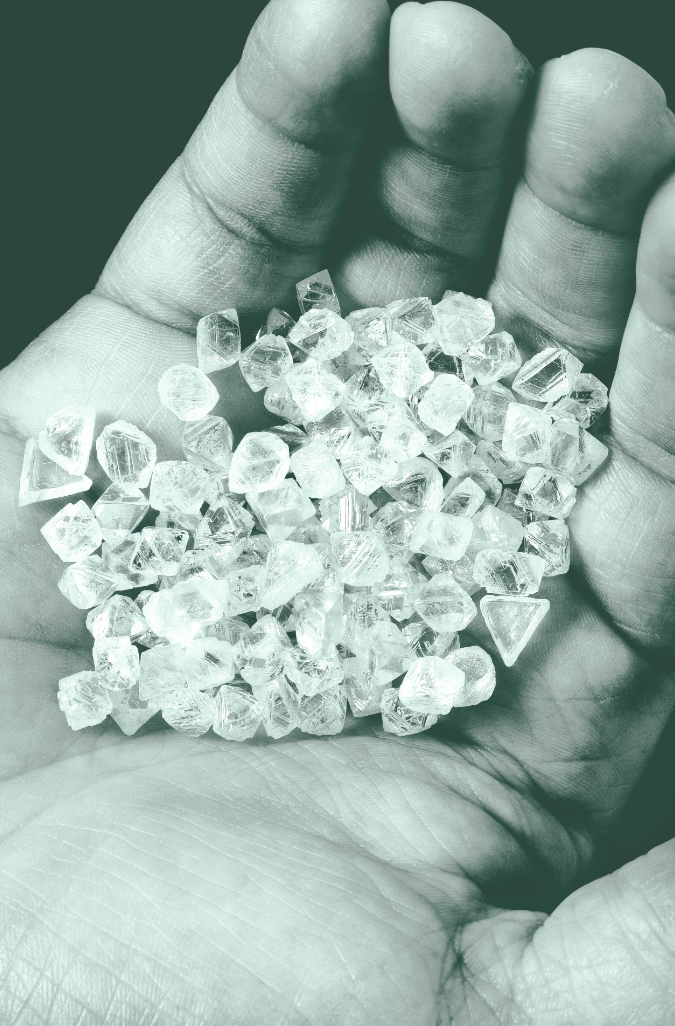Diamonds have always been desired for their sparkle, endurance and strength. These symbols of love and commitment worth much more than the jewellery you purchase, with a supply chain that affects economies and livelihoods across the globe. Whether they are mined in Africa or Canada, purchased in Europe, polished in India or retailed in USA, the industry has a far-reaching impact on the livelihood of 10 million people depending on the diamond industry. India, being the hub of diamond cutting and polishing, it has 1 million workers dependent on this industry which contributes to 7% of the country’s GDP.
With such a huge effect on the national and global economy, is it any wonder that diamonds have an impact that goes far beyond their renowned sparkle & brilliance? In today’s world, eco-consciousness and sustainability are the factors which every business and industry is trying to inculcate. Trucost ESG Analysis, part of S&P Global, released an independent report titled ‘ The Socioeconomic and Environmental Impact of Large-Scale Diamond Mining, which talked about the reality of modern diamond mining and how the Diamond Producers Association (DPA), an international alliance of the world’s leading diamond mining companies, and their members have put sustainability at their core. This third-party report aims to shed light on the current reality of the diamond mining industry. “The diamond mining industry has made conscious efforts to make a positive impact on the world. With this report, we have showcased total transparency about how we work as an industry, and just how much we contribute towards building communities in partnership with the local government bodies, We are not perfect, no industry is – but we are working to be better and are proud of what we have achieved so far”, said Jean-Marc Lieberherr, CEO, Diamond Producers Association. As elaborated in the report, the diamond mining industry created net benefits of $16 billion, with socio-economic and environmental benefits outweighing environmental and socio-economic impact by a staggering 1700%. The diamond mining sector protects 1023 sq. miles of land, which is three times the amount of land they use and 83% of water used for diamond mining is recycled. It is commonly known that the main environmental impact of modern diamond mining is attributable to greenhouse gas emissions. Although, according to the report the diamond mining industry collectively emitted 160kg of CO2e per polished carat produced, which is equivalent to the amount of CO2e generated by driving 390 miles in an average passenger vehicle, it is still 69% lesser than the emissions by lab-grown diamond companies for diamonds of an equivalent size.
It is quite clear that the diamond industry believes in giving back to the community. In a time where the local populace of a region is often ignored, $6.8 Billion worth of benefits were infused into communities through the purchase of local goods and services, which helped the indigenous population massively. In various towns and cities across the globe, along with providing basic infrastructure and roads, the diamond mining industry has contributed to $292 million worth of benefits towards social programs such as education and healthcare. The report also helps infer that the diamond industry considerably values its employees. With over 77,000 employees, an average diamond mining employee of these companies earns more than 66% of the national average salary of the USA and receives 5 times the living wage in his/her country, thus providing stable and high-paying jobs to individuals who otherwise wouldn’t have such an opportunity.
Bernick, Managing Director and Global Head of Trucost Corporate Business, said, “The data provided in the report provides a baseline for future progress on issues including environmental impact’The Trucost report thus, unearths the vital contributions made by the diamond industry towards socio¬economic development and a sustainable future, helping debunk the myths and misconceptions that revolve around the sector, and thus offering total clarity.




